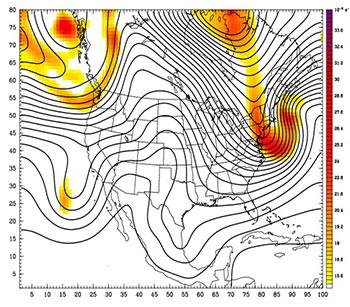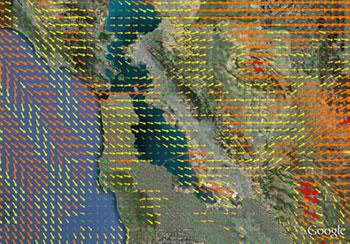NARAC uses an in-house version of the National Center for Atmospheric Research's (NCAR's) Weather Research and Forecasting (WRF) model to generate high-resolution wind fields when observations or available numerical weather prediction model output data are insufficient for accurate dispersion modeling. The large selection of physics options available in WRF to parameterize sub-grid scale phenomena such as convective processes and planetary boundary layer turbulent mixing allows NARAC to tailor the model configuration to optimize forecasting skill for specific scenarios.
Important features of the WRF model include:
- Grid system based on a continuous-terrain representation and a variable-resolution sigma vertical coordinate system (Arakawa-C grid)
- Multiple, nested grid capability
- Non-hydrostatic compressible dynamics (Klemp and Wilhelmson, JAS 1978) with second-order advection and fourth-order diffusion
- Large selection of sub-grid scale atmospheric physics parameterizations for radiation (Harshvardhan, JGR 1987), explicit moist physics (Rutledge and Hobbs, JAS 1983), convective precipitation physics (Kain and Fritsch, JAS 1990; Kuo, JAS 1979), boundary layer physics (Mellor and Yamada, 1982), and surface layer physics (Louis, 1979)
- Variety of meteorological data assimilation methods: multivariate optimum interpolation analysis of winds and temperature, time-dependent boundary conditions (Daview, QJRMS 1976; Perkey and Krietzberg, MWR 1976)






